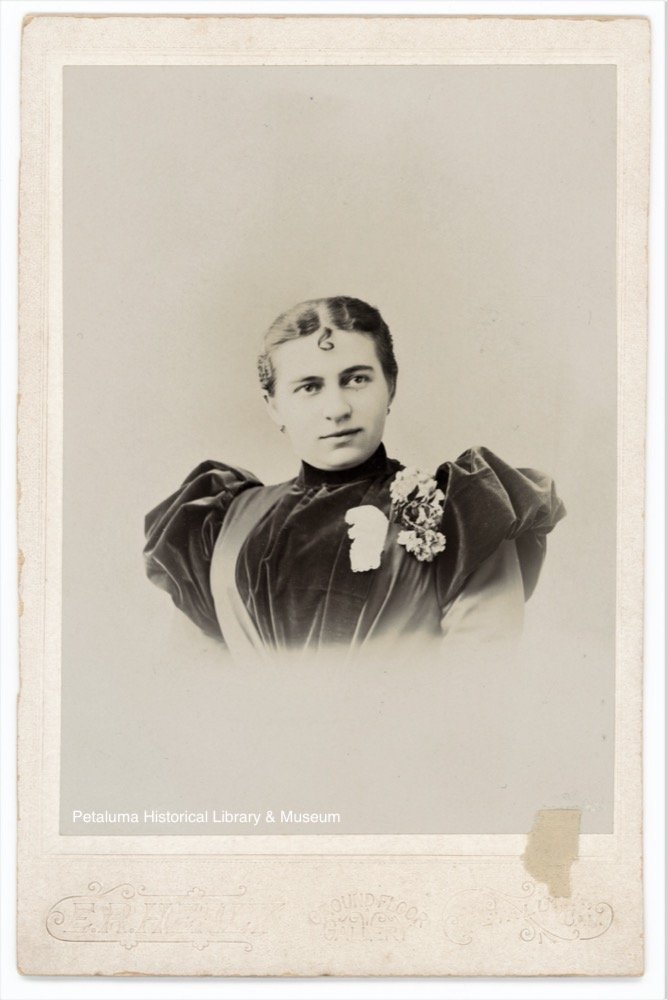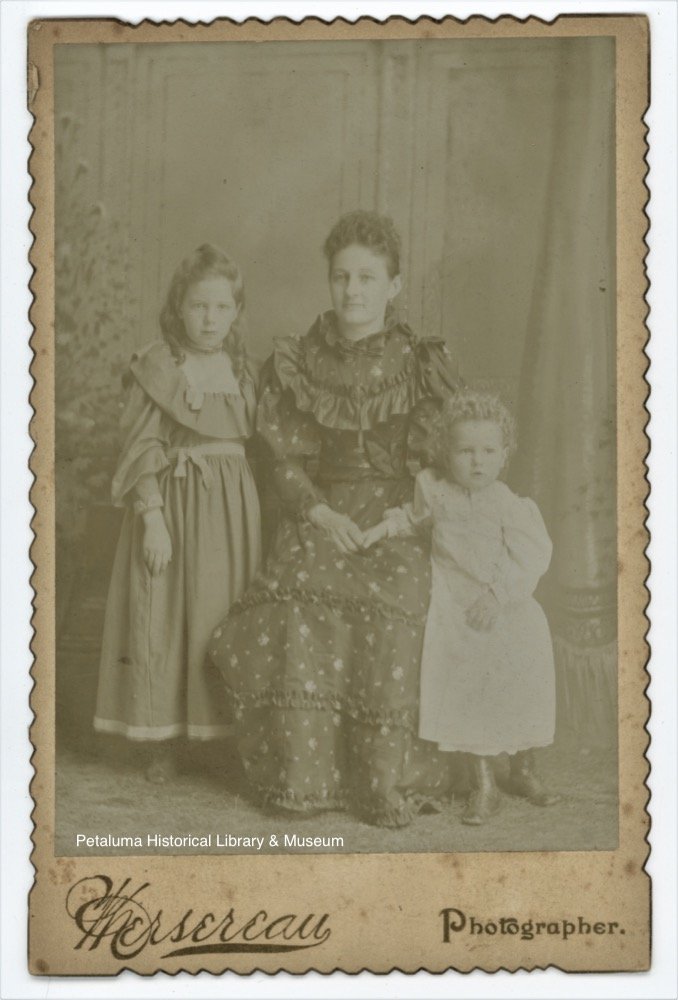THE PHOTOGRAPHER/ PHOTOGRAPHIC STUDIO:
Photographer: Isaiah West Taber (1830-1912). Taber opened his first photography studio in 1854 in Syracuse, New York. In 1864 he moved to California and worked at the Bradley and Rulofson studio at 429 Montgomery Street in San Francisco until 1873. By the end of the decade, Taber was creating portraits at his own studio at 8 Montgomery Street in San Francisco. He continued to produce portraits at his new studio location at 121 Post Street between 1893 and 1906. His studio and all its contents were destroyed in the 1906 San Francisco earthquake. Isaiah West Taber: A Photographic Legacy, introduction by Gary F. Kurtz, Windgate Press, Sausalito, California, 2004, Appendix A: Portraits by Taber.
Photographic Studio: Taber Studio, 8 Montgomery Street, San Francisco, California.
THE SITTER:
Name: Senator James Graham Fair
Description: This brilliantly composed portrait of the United States Senator, James Graham Fair, was created by the acclaimed San Francisco high-society photographer, Isaiah West Tabor. This is a powerful image of an important, middle-aged man. The viewers’ attention is immediately seized by the bisected composition. In the lighter top half, Fair’s prodigious head fills the arched format leaving little empty space. In the darker, lower half, Fair’s shoulders, clothed in a dark, double-breasted jacket, have been cropped to accentuate their massiveness, implying that they impressively extend significantly beyond the borders of the frame. Although Fair sports the full facial hair of a rough-and-ready male pioneer, his grooming is meticulous. The hair on the side of his face has been cropped short and cleanly trimmed along his cheek bones. His walrus mustache has been styled to reveal his lower lip, and his full, long, goatee beard has been shaped to blend with the tips of his mustache.
Biographical Note: JAMES GRAHAM FAIR (1831 – 1894) Miner, “silver baron”, U.S. Senator, real estate magnate, banker, newspaper owner (SF Daily Alta), railroad builder, vineyardist and winery owner. Irish immigrant, well educated and ambitious, James Fair came to California in 1850 seeking his fortune as a gold miner. He was one of the lucky ones, having success in the goldfields and able to hold on to his money.
When silver was discovered in Nevada he left for Virginia City and the “Comstock Lode”. With his keen business skills he quickly was moved into administrative positions with top producing mines including the Ophir Mine and then moving on to the Hale & Norcross mine. Later, with shrewd foresight, and a knowledge of mining, he formed a partnership, informally known as the “Bonanza Firm”, with three other Irishmen, soon buying out the mining concern of the “Consolidated Virginia Mining Company in 1872 for $50,000. Shortly therafter, they bought adjoining mines integrating them into Consolidated Virginia including, in1874, the “California Mining Company”. The gamble paid off . They hit the “Big Bonanza” …the “Mother Lode” the same year.
In a period of nine years, the mining firm of “Con Virginia”, as they were known, produced $105,157,490, and paid dividends of $74,250,000. Within a few years afterwards the company created a monopoly to literally control the mining interests of the entire Comstock Lode region. Never one to miss an opportunity, Fair invested heavily in San Francisco’s booming and profitable, real estate market, He was president of the Nevada Bank of S.F. In 1880 he conceived and built the South Pacific Coast Railroad Co which seven years later he sold to Southern Pacific RR for a $6M profit. In 1881 he was elected and served a full term in Washington as U.S. Senator from Nevada. Later he tried to gain control over the wheat market in the US. Hugely successful, but not always popular, especially in his business dealings and personal relationships, James G. Fair carried the moniker of “Slippery Jim” Fair.
In the 1880s California experienced what was referred to as the “Wine Boom”. The explosion of population brought on by the Gold Rush in the West, the decimation of two third’s to nine tenth’s of the European grape crop caused by Phylloxera, a vine,root sucking, aphid like insect, and California having the fertile land that was producing good wines in great abundance had all the components of profit in viticulture. James Fair did not miss this opportunity. It is revealed that in a conversation with historian, Hubert Howe Bancroft, Fair is quoted, with regard to winemaking as an investment,…..” With wine selling for 20 to 50 cents a gallon, a man can afford to pay $100 to $150, per acre…there will always be a market for wine”. This would be his next “Bonanza” He felt the profits would be greater in wine than in silver. Unlike other men of wealth and prominence who were investing in viticulture... going to Napa and other vicinities of winegrape growing, Fair decided, upon good advice from friends, that fine wines were being produced in the Lakeville region of Southern Sonoma County. This would be his choice. His decision was also based on logic and business acumen.
The Lakeville region was on Petaluma Creek, the third busiest inland waterway in the state. There was a wharf on the river and a railroad with a nearby terminus for easy shipping of wine to San Francisco or elsewhere. In 1891 James Fair bought the 9,140 acre William Bihler ranch for a reported $200,000. Bihler had bought the ranch in 1859 and had grown winegrape’s since 1878, (there is good evidence that it was even earlier). The Bihler winery was one of the largest single owned wineries in the state. And, his wines were said to have been of excellent quality. Fair allowed Bihler to maintain inventory at the winery, a total of 351,300 gallons of wine.
Although Fair never spent much time at the ranch, it was ably managed by the same manager’s that Bihler had used, Henry Sinclair and Jess Thorsen, and he always kept the ranch closely in check. He made improvements to the property, building a large, brick addition to the already existing winery. Cooperage had increased to store and age over six hundred gallons of fine wine, all in redwood, and, he installed the first continuous brandy distillery on the Pacific Coast. He also created a wharf on the creek.
According to Issac De Turk, commissioner for the Sonoma District, California State Viticultural Commission, by 1892 the Fair Ranch had 300 winegrape bearing acres and a 600 ton crop. Fair counted among his biggest and most esteemed customers Charles Carpy of Uncle Sam Wine Cellars in Napa, who would become one of the founding fathers of the CALIFORNIA WINE ASSOCIATION in 1894.
Fair died in 1894. He left an estate of over $40,000,000 . The much convoluted and contested estate was not settled for ten years during which time the ranch continued along with viticulture, and interestingly enough, under the guidance of the same management. In 1905 it was sold to A.W. Foster. Viticulture continued until a few years before Prohibition.
James G. Fair, one of California’s most prominent and notorious characters, never reaped the rewards of his viticultural endeavor, but his contribution to the tradition of winemaking in Southern Sonoma County is huge and the impact indelible. At its apex, the Fair Winery was one of the largest wineries in Sonoma County and the State of California.
Biographical Notes written by historian and collector, Frank A. Sternad.
Family Affiliation: https://www.findagrave.com/memorial/7861239/james-g-fair
Bibliography:
THE PHOTOGRAPH:
Format / Size: cabinet card
Medium: gelatin or collodion photographic print mounted on cardstock
Description, front: This head-and-shoulders portrait of Senator James Graham Fair is set within a classic, arched format. Along the bottom of the card is the imprint of the San Francisco photographer, Isaiah West Tabor.
Description, back: According to the owner of this cabinet card, the back side is blank.
Date: The photographer’s imprint on the bottom front edge of this card allows us to assume that this portrait was created between 1883 and 1886.
Condition: The cabinet card is slightly foxed throughout.
Owner: The Collection of Frank A. Sternad, digital copy by permission.
Reproduction rights: The Petaluma Museum Association makes no assertions as to ownership of any original copyrights to the digitized images here reproduced. These images are intended for personal or research use only. Any other kind of use, including, but not limited to commercial or scholarly publication in any medium or format, public exhibition, or use online or in a web site, may be subject to additional restrictions including but not limited to the copyrights held by parties other than the Association. USERS ARE SOLELY RESPONSIBLE for determining the existence of such rights and for obtaining any permissions and/or paying associated fees necessary for the proposed use.





